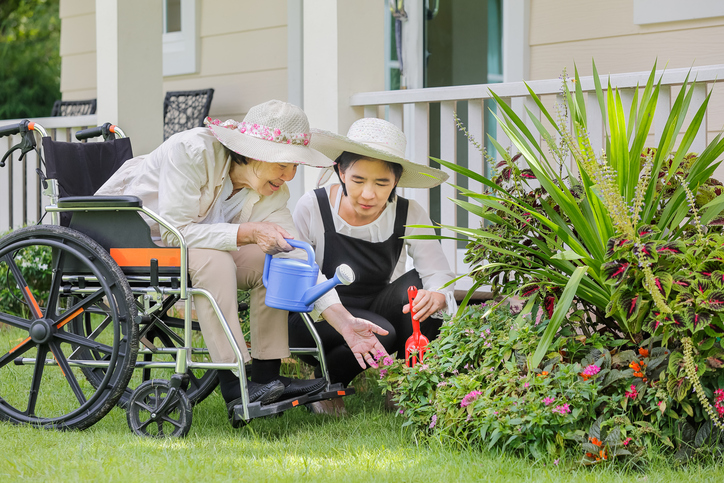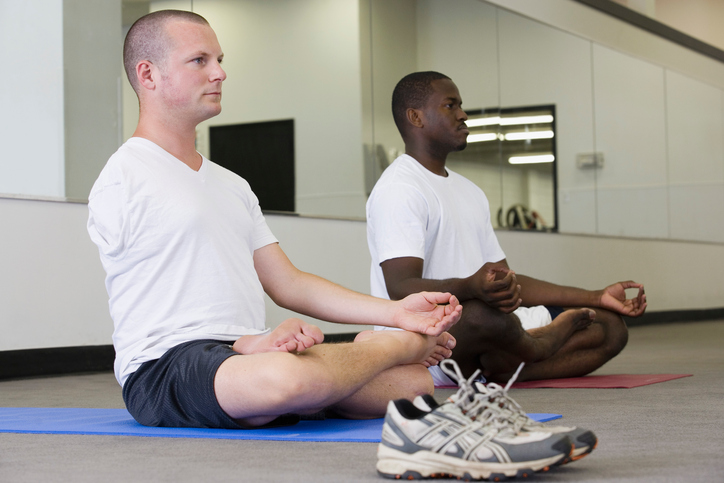 Recovery from posttraumatic stress (PTSD) is a journey that takes a different shape for each individual. It is never too early or too late to seek psychotherapy. Treatments can help people overcome symptoms and move on from posttraumatic stress altogether.
Recovery from posttraumatic stress (PTSD) is a journey that takes a different shape for each individual. It is never too early or too late to seek psychotherapy. Treatments can help people overcome symptoms and move on from posttraumatic stress altogether.
According to trauma therapist Susanne Dillmann, "We may avoid situations or people that remind us of the trauma. We may be emotionally numb, depressed, or anxious...If you experience such feelings, thoughts, or behaviors after a trauma, know that such experiences are very human and nothing to be ashamed of. Through the assistance of a trained professional, one can heal from the consequences of a trauma."
- Therapy for Posttraumatic Stress
- Help for Loved Ones of People with PTSD
- Complementary and Alternative Medicine for PTSD
- Case Examples of Therapy for PTSD
- Resources Related to Trauma/PTSD
Therapy for Posttraumatic Stress
Therapy often helps people make sense of their experiences. Counseling will not erase the trauma, but it can soothe painful feelings from that trauma. A therapist can teach healthy coping skills to reduce the severity and frequency of symptoms. Therapy can guide a person to posttraumatic growth, reaffirming their inner strength.
There are many evidence-based treatments for PTSD. Some of the more common modalities include:
- Eye movement desensitization and reprocessing (EMDR): This approach was specifically designed to treat PTSD. A therapist will use sensory cues to help people process traumatic memories.
- Exposure therapy: This treatment exposes an individual to reminders of the trauma in a safe space. A therapist can help the person with any distress that results. Ideally a person will grow desensitized to the memory over repeated sessions.
- Cognitive processing therapy (CPT): A form of cognitive behavioral therapy used specifically for trauma. An individual can learn how trauma has affected their beliefs, and how these thoughts in turn affect behavior. CPT can help individuals break harmful patterns of negativity.
- Logotherapy: This treatment addresses a person’s existential concerns after trauma. It can help someone find meaning after loss.
- Group therapy: A trained therapist will guide a group of 4-12 people in discussion. Group therapy can provide social support for people who might otherwise isolate themselves.
In some cases, psychotropic medication may be used in combination with therapy. People with PTSD may find medication helpful for improving sleep and stabilizing mood.
Most people with PTSD who receive therapy are able to recover. If someone is still struggling despite treatment, they may have a co-occurring diagnosis. Conditions such as depression can interfere with treatment when they go unacknowledged. Even if a person came to therapy for PTSD specifically, it is often helpful to treat diagnoses in tandem.
Help for Loved Ones of People with PTSD
People whose loved ones have PTSD may struggle to determine how they can help. Sometimes, the individual with PTSD knows what they need most. They may ask for help with daily chores. They may need advice. They may want somebody to listen to their story without judgement.
Friends and family may be able to offer these things. But some people may try to help and end up being hurt themselves. One common challenge is vicarious trauma. Hearing someone talk about a traumatic experience can cause emotional distress and fatigue. Indirect exposure to traumas such as rape or military combat can itself be traumatic.
People who provide ongoing care to a loved one with PTSD may suffer from caregiver stress. Many caregivers experience mental health issues such as depression and anxiety. In some cases, a caregiver may be exposed to trauma (secondary or direct) and develop PTSD themselves.
Therapy can help with these challenges. A caregiver can also benefit from self-care strategies such as:
- Talking to a supportive friend
- Taking time away from caregiving
- Setting clear boundaries with a care recipient who may have unreasonable expectations
Family and friends are unlikely to cure a loved one of PTSD. When a loved one has posttraumatic stress, they likely need a mental health professional.
A therapist has the training required to assess a person’s symptoms. They can determine the appropriate treatment for a person’s situation. If spouse or relative has been affected by a loved one’s PTSD, they may benefit from joint counseling.
Complementary and Alternative Medicine for PTSD
Many people with PTSD use complementary and alternative medicine (CAM). CAMs are treatments placed outside of conventional Western medicine, such as yoga or aromatherapy. They are often used in tandem with standard care.
 The Department of Veterans Affairs (VA) says CAM use is especially common among veterans with PTSD. A 2012 survey found 39% of veterans with PTSD had used CAM in the previous year. Another study showed veterans with PTSD were 25% more likely to use CAM than their peers without PTSD. Ninety-six percent of the VA’s treatment programs for PTSD offer at least one CAM treatment.
The Department of Veterans Affairs (VA) says CAM use is especially common among veterans with PTSD. A 2012 survey found 39% of veterans with PTSD had used CAM in the previous year. Another study showed veterans with PTSD were 25% more likely to use CAM than their peers without PTSD. Ninety-six percent of the VA’s treatment programs for PTSD offer at least one CAM treatment.
According to the VA, evidence is mixed regarding the effectiveness of CAM. Acupuncture has the most evidence of benefiting people with PTSD. Meditation and progressive relaxation techniques also show modest benefits.
In general, experts do not recommend using CAM as a replacement for evidence-based treatments. Yet CAM can be a good supplement to therapy and medication. A mental health professional can help individuals choose which CAMs best fit their needs.
Case Examples of Therapy for PTSD
- Iraq war veteran finds it difficult to readjust to civilian life: Ricky, 26, has recently returned from Iraq, where she saw heavy combat. She tells her therapist she was fine until the week before. A robbery had occurred in a local store while she was there. Suddenly, Ricky was paralyzed by graphic memories of her time in combat. Since then, she has had nightmares about Iraq mixed with images of her home. Ricky feels overwhelmed and anxious about these flashbacks. She also has some guilt associated with not stopping the local robbery, having internalized acts of bravery as her duty and responsibility. In therapy, Ricky explores her beliefs about what it means to be a veteran and what she expects from herself. The therapist teaches Ricky some relaxation and grounding exercises. At Ricky’s request, the therapist offers a psychiatric referral for anti-anxiety medication to help Ricky sleep. Ricky decides to join a therapy group for veterans who experience similar issues. A year after her first visit, she is no longer taking medication. Ricky is feeling more hopeful, though she still struggles with intense grief about the war.
- Repercussions of childhood abuse: Pat, 52, seeks therapy for help with his anxiety. His history reveals severe physical abuse as a child, which Pat is reluctant to revisit. Pat’s therapist does not force him to revisit the events but gently brings the abuse up in a later session. When she does, Pat becomes very upset. In the next session, the therapist invites Pat to examine his angry response. Pat agrees that his reaction indicates the abuse is still affecting him. Pat’s therapist recommends eye movement desensitization and reprocessing (EMDR) therapy. He begins EMDR sessions, which help him acknowledge the abuse in a relatively passive way. After several sessions, Pat is able to confront his abusive past more openly and heal from it. His anxiety levels diminish over time.
Resources Related to Trauma/PTSD
The following are digital resources which may be helpful for people with PTSD and their loved ones.
- Making Peace With Chronic PTSD: Marla's Story: This video takes a look at chronic PTSD with trauma expert Frank Ochberg MD, once the Associate Director for the National Institute of Mental Health (NIMH), and Dr. Marla Handy, a former university lecturer with a history of chronic PTSD as a result of childhood abuse and sexual trauma. This DVD is being used by clinicians, social workers, educators, and trauma survivors. You can buy the full DVD from Gift From Within, a nonprofit organization for survivors of trauma and victimization. Gift From Within has given GoodTherapy.org special permission to use the video.
- Helping Traumatized Children at School: This article by Kathleen Nader, DSW, addresses the effects of trauma on children.
- The Trauma & Mental Health Report: This blog is written by Dr. Robert Muller. It helps make the topic of interpersonal trauma accessible to both therapists and the general public.
If you are seeking treatment for PTSD, you can find a therapist here.
References:
- Bradley, R., Greene, J., Russ, E., Dutra, L., & Westen, D. (2005). A multidimensional meta-analysis of psychotherapy for PTSD. The American Journal of Psychiatry, 162(2), 214-27. Retrieved from http://ajp.psychiatryonline.org/doi/abs/10.1176/appi.ajp.162.2.214
- Complementary and alternative medicine (CAM) for PTSD. (n.d.) U.S. Department of Veterans Affairs. Retrieved from https://www.ptsd.va.gov/professional/treatment/overview/complementary_alternative_for_ptsd.asp
- Libby, D. J., Pilver, C. E., & Desai, R. (2012). Psychiatric Services, 63(11), 1124-1136. Retrieved from https://www.ncbi.nlm.nih.gov/pubmed/23117511
- Partners of veterans with PTSD: Common problems. (2015, August 13). U.S. Department of Veterans Affairs. Retrieved from https://www.ptsd.va.gov/public/family/partners-of-vets.asp
- Southwick, S. M., Gilmartin, R., McDonough, P., & Morrissey, P. (2006). Logotherapy as an adjunctive treatment for chronic combat-related PTSD: A meaning-based intervention. American Journal of Psychotherapy, 60(2), 161-74. Retrieved from https://pdfs.semanticscholar.org/20c7/e8a4b4da1f2b6ddd72d96853980c05d35742.pdf
- Tedeschi, Richard G., and Calhoun, Lawrence G. (2004). Posttraumatic Growth: Conceptual Foundations and Empirical Evidence. Psychological Inquiry, 15(1). Retrieved from http://data.psych.udel.edu/abelcher/Shared%20Documents/3%20Psychopathology%20(27)/Tedeschi,%20Calhoun,%202004.pdf


